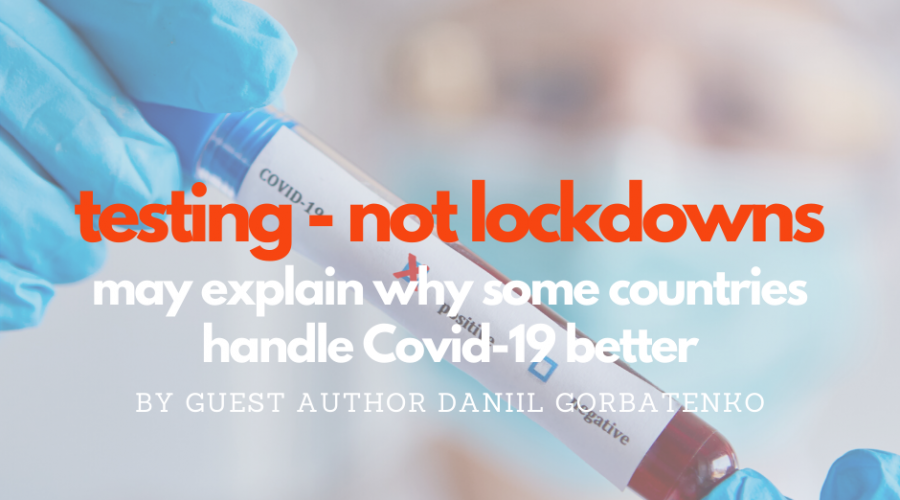What the NHS can learn from Germany’s Hospital System
Post-Coronavirus, the UK should not shy away from debate over the NHS, and how to achieve better patient outcomes, argues Fred Roeder
When contrasting how countries around the world are coping with COVID-19, over the past few weeks one country has stood out. Germany’s health system has received regular praise for its resilience in facing the COVID-19 pandemic, but what are they doing right?
Germany is one of the most affected countries in Europe but the mortality rates are significantly lower than in most other European countries dealing with the coronavirus. Germany’s capacity to test widely and early has definitely contributed to this but an often underappreciated factor is its very competitive, modern, and often private hospital system.
While the UK currently has fewer confirmed COVID-19 cases, this is probably due to the lack of testing capacities of the NHS, the more interesting and shocking number is that the death rate per 1 million people is four times higher in the United Kingdom compared to Germany. Germany’s mainly private and decentralized testing infrastructure happens mostly outside of hospitals, in private laboratories, and has enabled Germany to conduct as many as 150,000 tests per week. To put that in comparison, the UK has managed less than 10,000 a day so far.
Being the relative of an NHS patient, I had to assist her to go through its byzantine and centralized testing regime, even for simple blood samples. GPs send patients to hospitals just to get their blood taken and analysed. Scaling up such a centralized testing system allows no mistakes to be made. A decentralized and independent system however allows for some parts in the chain to fail and the other still to perform, and crucially allows room for innovation.
Merely 28% of the roughly 1,950 hospitals that participate in Germany’s universal health system are owned by the government. 37% are private for profit hospitals that treat patients covered by the public health insurances and receive the same amount of reimbursement per case as the public ones or the 34% that are operated by churches and other charities. Despite charging the same as government hospitals private for-profit hospitals have the highest investment per case (about 64% higher than public hospitals), which leads to more state-of-the-art treatment and newer medical equipment.
It is also very interesting to look at how private hospitals perform better compared to government hospitals in Germany. Within the first four years one can observe an increase in efficiency of between 3.2% and 5.4% above those hospitals that had not been privatised. Despite its mainly private character Germany has nearly three times as many beds per 100,000 people compared to the UK. It gets even worse when looking at intensive care beds per 100,000. Germany has over 4 times the intensive care capacity compared to the NHS. In recent weeks Germany added another 40% additional capacity to its already high intensive care beds. This number is not reflected in the comparison.
Given that we are currently facing a massive pandemic it is shocking to see how poorly prepared the centralized NHS was, from a lack of protective equipment for clinicians, to its failure to prepare for mass testing. While the hard work of individuals within the health service has done what seemed impossible only weeks ago, and has prepared the NHS to cope with coronavirus, structural issues remain.
A pluralistic hospital system that endorses competition and patient choice such as the German one seems to be in a much better position to cope with potentially tens of thousands of severe COVID-19 cases.
Yes, also in this comparatively better German hospital system patients die and doctors contract COVID-19. Healthcare workers in Germany are also overwhelmed with the amount of cases and patients. But overall it looks like Germany can endure and face this wave in a much more prepared and resilient fashion compared to the NHS which is still facing huge problems mastering this mammoth task.
After we are all through with this we should not shy away from a debate if it’s not time to open up bigger parts of the NHS hospital systems, allow competition and make the health of British patients a priority.
Originally published here.
The Consumer Choice Center is the consumer advocacy group supporting lifestyle freedom, innovation, privacy, science, and consumer choice. The main policy areas we focus on are digital, mobility, lifestyle & consumer goods, and health & science.
The CCC represents consumers in over 100 countries across the globe. We closely monitor regulatory trends in Ottawa, Washington, Brussels, Geneva and other hotspots of regulation and inform and activate consumers to fight for #ConsumerChoice. Learn more at consumerchoicecenter.org



